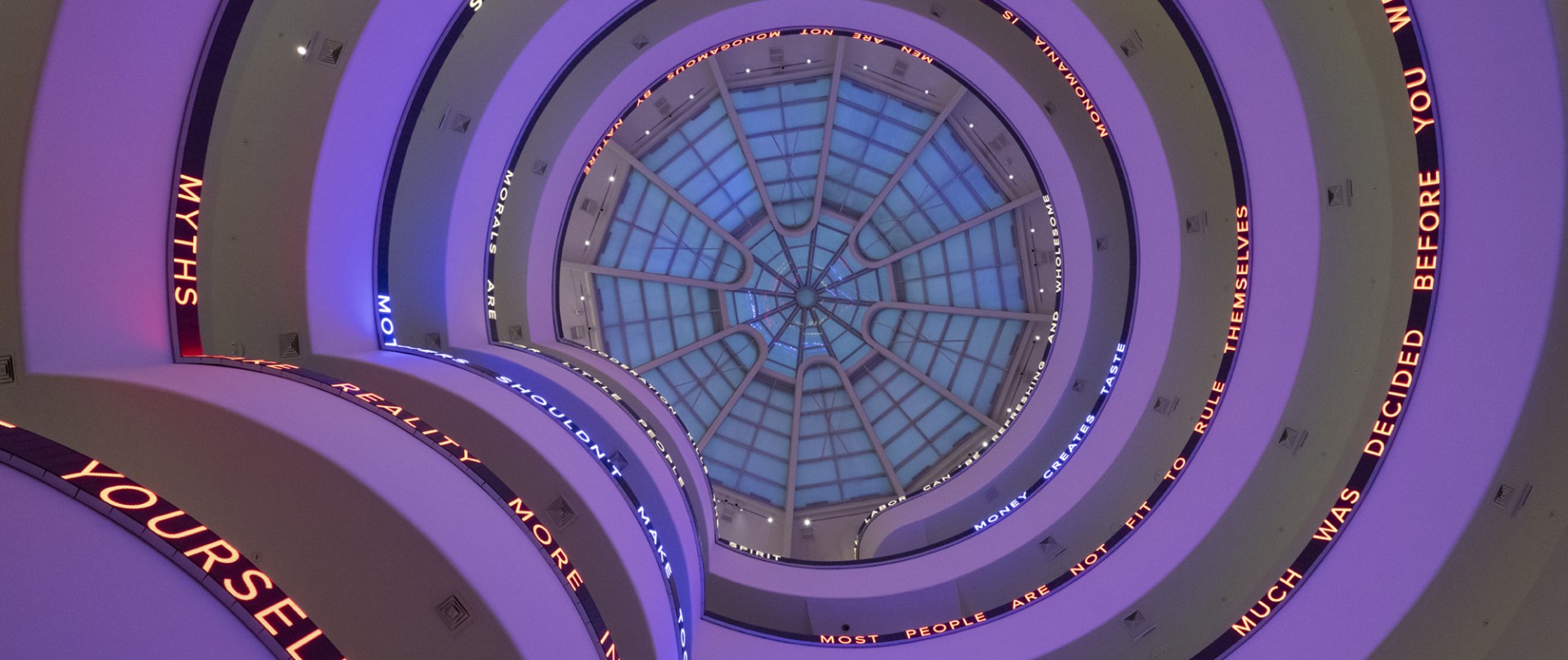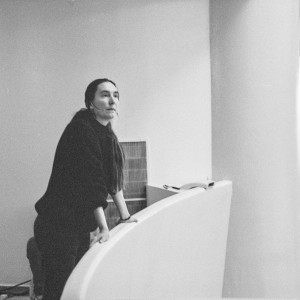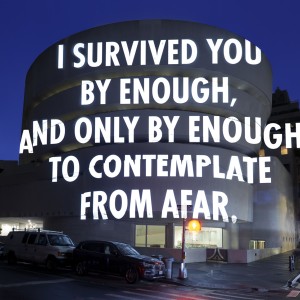Her neon writing follows the upward motion of the spiral staircase of the museum designed by Frank Lloyd Wright
With *Light Line*, Jenny Holzer returns to the Guggenheim after the 1989 installation, which in turn took up *Truism* (1978-1987), the first series of artworks that made her famous, that is a series of writings, that become artworks to see, but above all to read: maxima, brief sentences, quotes, neon writings that flow.
Frank Lloyd Wright’s spiral, cross, and delight for entire generations of curators is particularly suited to host the decades-long research of the first female artist to have a solo show in the American pavilion of the 1990 Biennale. The neon writings follow the upward motion of the museum stairs—this is the “line of light” that gives the title to the exhibition—but without the sharp verticality, for example, of the Transfiguration of Raphael.
SHE WAS THE FIRST FEMALE ARTIST TO HAVE A SOLO SHOW IN THE AMERICAN PAVILION OF THE 1990 VENICE BIENNALE
The art to read by Holzer does not give certainties, but rather highlights in a problematic way, as every artist, the knot that tightens, separates, and unites what you see from what you do not see, as what you imagine from what you write. Labile distinctions, analyzed and ridiculed in the different levels of the exhibition, through tables that recall the Rosetta Stone but report Trump’s tweets, failed war plans defined with the help of artificial intelligence, reports taken from the FBI archives on the activities of artists and writers entirely erased.
On everything, the lesson of Louise Bourgeois: art is above all a choice of color, therefore of light. To think that there is pure writing only because one reads it is an illusion, because those words must above all be seen. Images and words define the semantics of reality and power.
Behind the simple evidence, everything is more complicated than it seems: Raphael paints Christ surrounded by light. The image is an interpretation of three different passages from the Gospels of Mark, Matthew, and Luke. With the light of Christ, Raphael represents the darkness of the possessed young man, at the bottom right: an anachronism because Jesus will heal the boy only after the transfiguration, in another passage of the three Gospels.
At the death of Raphael, writes Vasari, the painting is placed at the bedside of the artist. The body is dead, writes Vasari, the artwork is alive. But, it seems to mean Vasari, the light of the image transfigures the author. Thanks to this light, the critic can write that the artist is “divine.” Exchanges, passages. Visions.
























